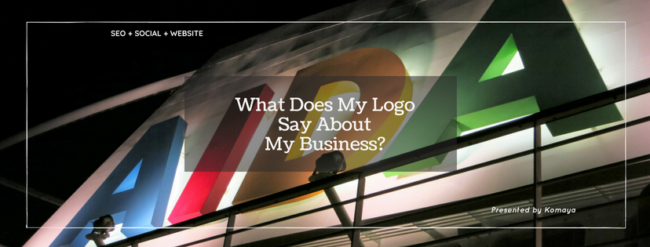Your logo is a visual representation of your business. It not only conveys the name of your business but connects people to your brand, ideally in a powerful way. Your logo should garner attention, separate you from your competition, and communicate to your audience what your brand and message are. Some logos are so iconic, they need no text at all and are almost universally recognized. The Nike swoosh is instantly recognizable, and the logo is immediately associated with elevated athletic footwear. So what does your logo say about your business?
About 65% of the population is most responsive to visual memory. The most successful brands have logos that evoke an emotion through visualization. Your logo should combine several key elements to connect your business to your customers. Message, audience, color, and graphics all meld together in your logo to communicate your brand to the world.
Your message is the foundation for your logo and what it says about your business. Is your company traditional or cutting edge? Whimsical or somber? Font, graphics, and your color palette will help convey the message and tone. A funeral home and a toy store have very different messages that should be reflected in all the elements of the logo. Your logo should tell the story of your brand. A good logo will be clear, memorable and give an indication of what your company or product is about.
Logos for High-End Brands Often Use Monograms
Your next consideration should be your target audience. A logo for a motorcycle company should look quite different from that of a lipstick company. Your logo should reflect the aesthetics of your intended audience and help to create an emotional response from them as well. Consumers can so strongly identify with a brand and logo, it becomes a part of their personal brand. The iconic monogrammed initials CC of Chanel or LV of Louis Vuitton have been adopted by celebrities to convey a sense of prestige and exclusivity.
Logo Colors Evoke Certain Feelings
Color choice should embody both your message and your audience. In Joe Hallock’s work “Colour Assignment” his data shows preferences to certain colors based on gender. Different colors are associated with different attributes, and some of the world’s largest companies have capitalized on those associations. Nearly one-third of companies use red in their logos; which is a color of high energy and passion. Both social media companies and credit cards like American Express and Visa use blue in their logos, which indicates trust and stability. Psychologically, yellow is considered the happiest color in the spectrum and McDonald’s and Ikea use the color as a memory stimulant.
Confusing Logos Detract From Your Message
The graphics part of your logo can be one of the most difficult pieces of the puzzle. Clean, simple designs are best and they should be distinct, timeless, and easy to reproduce in various sizes. Your graphic should connect to your brand message with imagery, shape or style. The graphics in your logo are the visual representation of your brand message. Logos convey a sense of security, trust, and build rapport with your customers. Confusing or unclear graphics detract from your message, and they can leave consumers guessing about your company.
The human brain processes shapes and colors more easily than words, so the right combination of graphics and colors will make your brand more memorable. The visual library in our minds associate emotions with fonts, shapes, and colors. A logo can create an immediate impression of the brand based on those emotional associations. By creating a logo that conveys your message to your target audience through a combination of meaningful colors and graphics; you can elevate your brand, improve memorability, and establish trust between your customers and your business. Is your logo saying what you want about your business?
To learn more about color impacts, you may also want to read our blog on “The Importance of Colors to Your Brand“.
